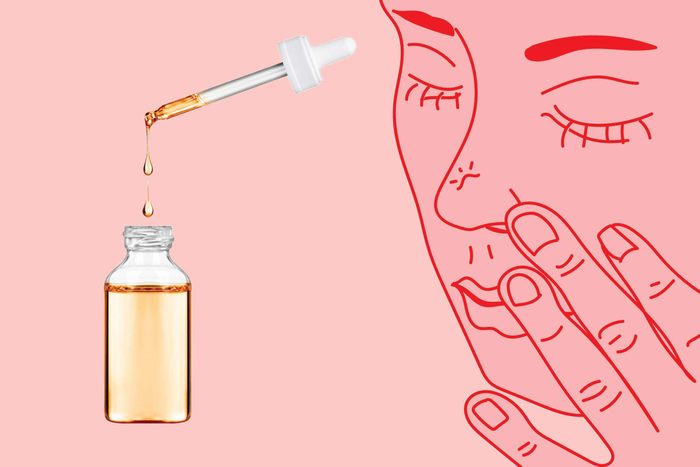
Tea tree oil uses: Clear acne
One of the most common tea tree oil uses is as a home remedy for acne. Research published in the 2017 Australasian Journal of Dermatology reinforces what many earlier tea tree oil studies have found: when used to treat mild to moderate facial acne, “tea tree oil products reduce numbers of lesions and are well tolerated.” Ava Shamban, MD, a board-certified dermatologist with Ava MD in Beverly Hills and Santa Monica, California agrees. She explains that tea tree oil offers a host of dermatologic benefits. Its ability to help combat facial skin problems like acne or boils, without compromising the rest of the healthy skin microbiome on your face, she says, makes it ideal in this case. She suggests diluting a couple of drops of the oil with a carrier oil like rosehip oil and applying it to the problem areas. If you have small bumps on your arms, they may not be acne. Learn how to get rid of “chicken skin” with dermatologist-approved treatments.
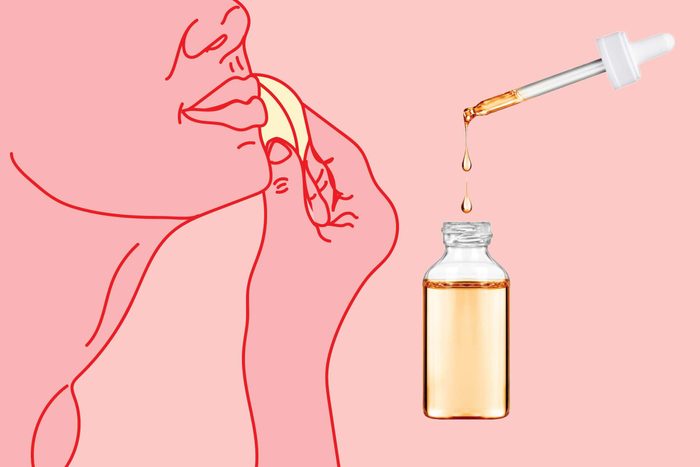
Tea tree oil uses: Remove makeup
“Tea tree oil is anti-bacterial,” says Dr. Shamban. She explains that many people, especially those living in or near cities, may end up having more pollutants stick to their skin. Cleansing your face with tea tree oil can help remove makeup as well as these pollutants—and it’s an added bonus if you have an underlying skin condition like acne; it’s antibacterial effects help. Just be careful not to overdo it. She explains that more isn’t necessarily better and advises not using tea tree oil that’s higher than a one-percent concentration. Dr. Shamban suggests mixing a few drops with a carrier oil such as rosehip oil on a cotton ball, then sweeping it over your face. While you’re at it, here are some other life-changing ways you can use cotton balls.
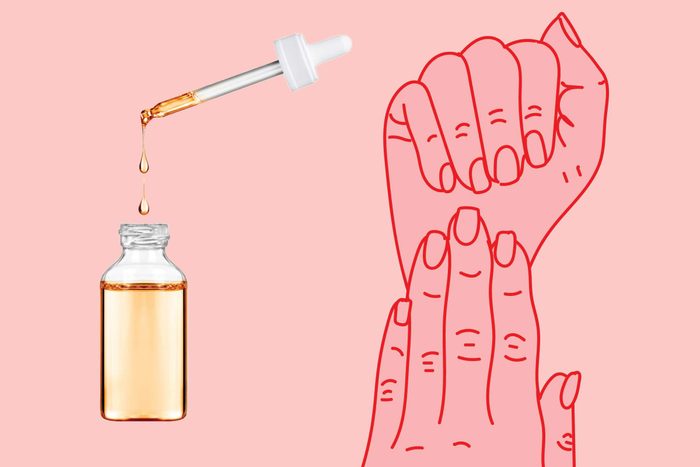
Tea tree oil uses: Soften dry cuticles
If your cuticles show signs of an infection (redness or swelling), Dr. Shamban suggests massaging them with tea tree oil mixed with a carrier oil. “Tea tree oil, which comes from a small tree native to Australia, has a wide range of dermatologic applications,” she says. In the case of infected cuticles, she explains that the oil is a beneficial anti-inflammatory (it’s also is anti-viral, anti-fungal, anti-bacterial, to name just a few of its other benefits). However, if you simply have dry cuticles, she says the oil isn’t a particularly good humectant. She recommends using a glycolic acid instead. To maintain good nail health, make sure you’re not engaging in these everyday habits that could be ruining your nails.
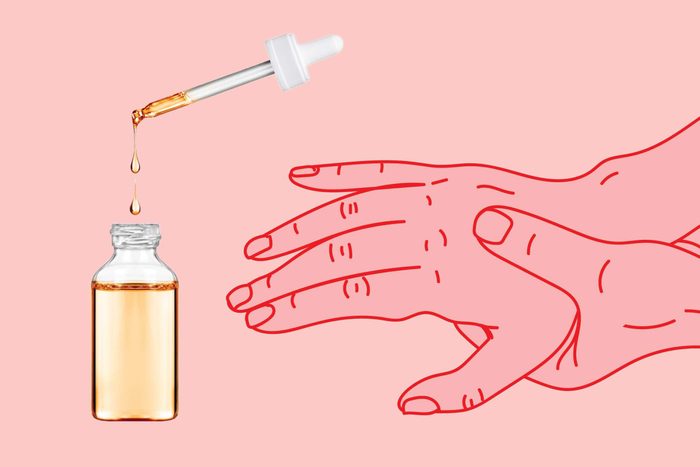
Tea tree oil uses: Soothe sores
Help sores, cuts, and wounds heal with tea tree oil. A small, older study published in the Journal of Alternative and Complementary Medicine found that the oil, along with conventional treatment, helped to speed healing time in people who had wounds infected with Staphylococcus aureus. It worked better than simply treating the wound with conventional treatment alone. The University of Michigan Health System also notes that “people usually use tea tree oil to treat minor cuts,” in addition to treating issues like burns and acne. They explain that it’s safe as a topical treatment, and can be applied to your skin daily. Although skin irritation rarely occurs, they suggest testing the area first and diluting the oil with a carrier oil like olive or almond oil.
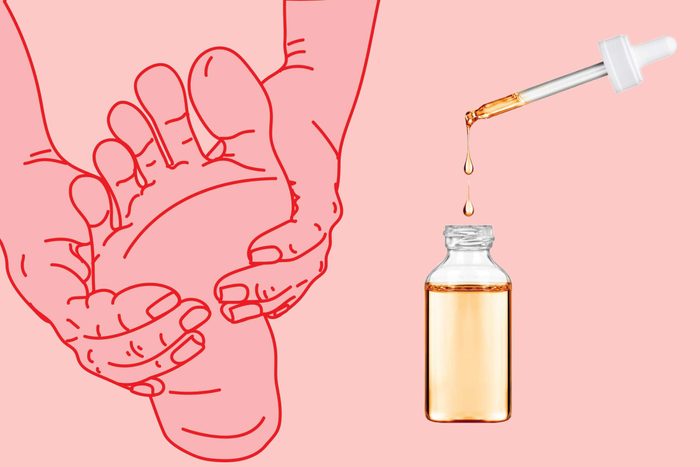
Tea tree oil uses: Fight foot odor
First off, if you’re concerned about your perspiration, find out what your sweat says about your health. Of course, it’s no fun when it comes to foot odor, which Dr. Shamban says typically happens due to bacterial overgrowth that occurs in damp and sticky areas. “Tea tree oil does two things at once,” she says. “It helps reduce the bacterial overgrowth and it smells fresh.” She suggests washing your feet, drying them thoroughly (ideally with a hairdryer), then moisturizing them with one or two drops of tea tree oil to about two quarter-sized amounts of lotion or cream.
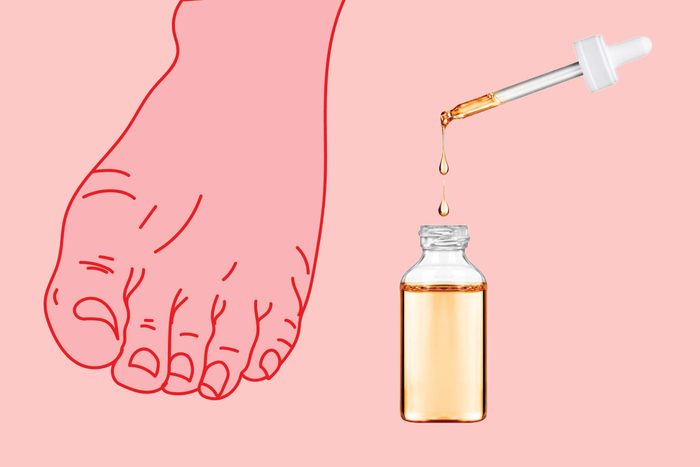
Tea tree oil uses: Eliminate toenail fungus
According to the Global Nail Fungus Organization, toenail fungus impacts upwards of 20 percent of adults. If you’re one of them, the organization explains that certain non-prescription topical agents – including tea tree oil – can help. Try applying 100% undiluted tea tree oil directly to your nail (be careful not to apply tea tree to the skin since undiluted tea tree oil may be irritating), letting it soak there for 10 minutes. After that time, use a soft-bristle toothbrush to delicately scrub the affected nail. They suggest doing this twice a day until your toenail resumes its regular, healthy appearance.
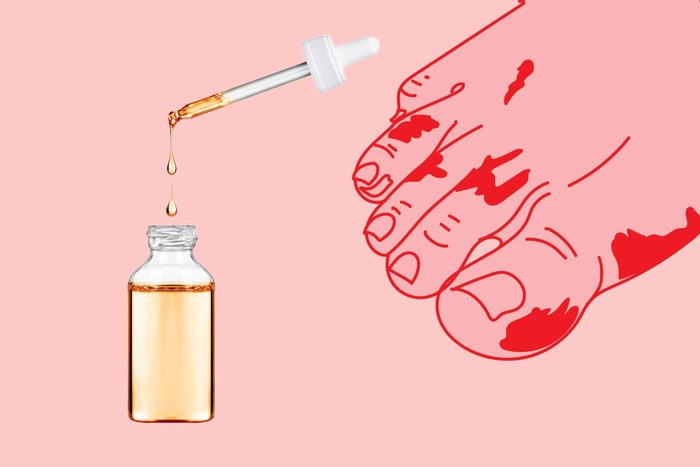
Tea tree oil uses: Relieve athlete’s foot
To help the burning, itching, inflammation, and scaling associated with athlete’s foot, which is a fungal infection, turn to tea tree oil. Dr. Shambam says that tea tree oil’s anti-fungal ability is just one of its many dermatologic benefits. She reinforces the fact that you shouldn’t think that “more is better.” Too much tea tree oil may cause skin irritations in some people. Instead, she says to add just a drop or two to a carrier oil such as olive oil or rosehip oil—or to a lotion—and apply to the area after washing and thoroughly drying.
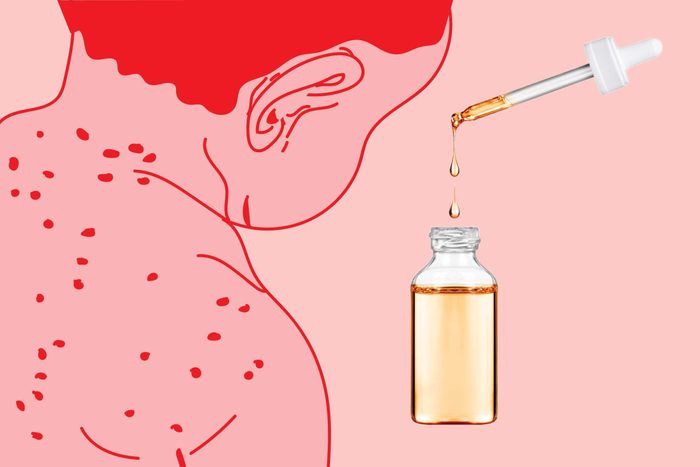
Tea tree oil uses: Treat chickenpox
Dr. Shamban is a fan of tea tree oil because it helps with many skin issues. She says that chickenpox, although it’s not as commonly seen in people today as it once was, is one example. “You can add a little bit of tea tree oil to calamine lotion,” she says. She explains that the oil acts as an added benefit to calamine lotion’s ability to help dry areas out and relieve itchiness associated with chickenpox. “It helps to reduce the inflammation,” she says. If you’re not sure if you have chickenpox, learn how to ID these common skin irritations.
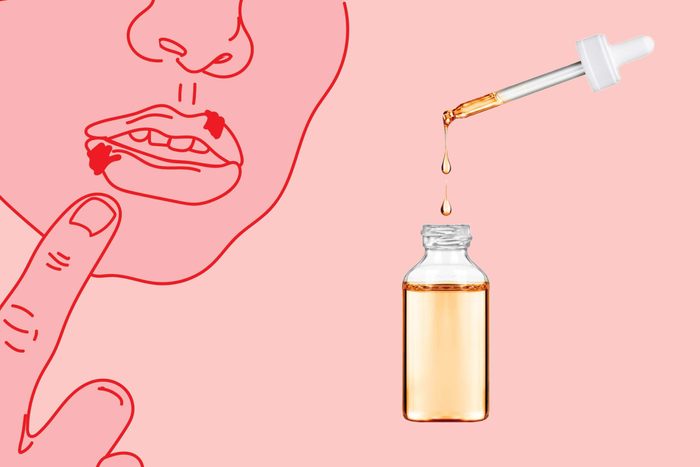
Tea tree oil uses: Reduce cold sores
Apply tea tree oil directly on the cold sore, ideally mixed with a carrier oil like sweet almond oil. Dr. Shamban says that one of tea tree oil’s many benefits includes its anti-viral abilities. This makes it ideal for helping treat cold sores. Just proceed with caution: The Mayo Clinic states that for some people, direct topical application of tea tree oil can lead to skin irritations. Additionally, it can be toxic if swallowed, so be careful not to ingest. Otherwise, use tea tree oil to help reduce cold sores, which are also one of the small body changes that can indicate larger health problems.
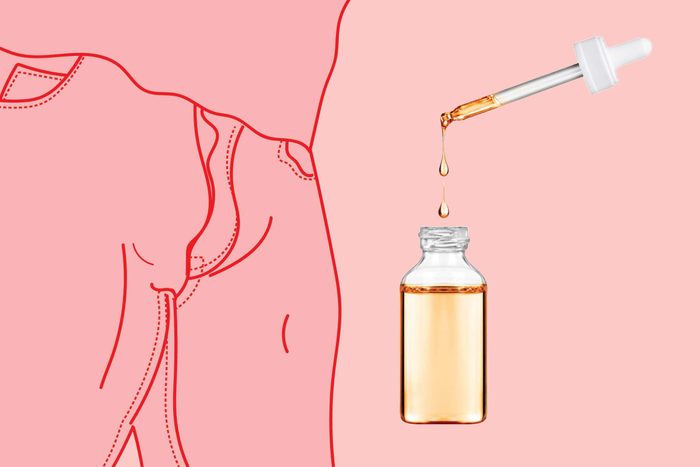
Tea tree oil uses: Banish jock itch
If you have jock itch, also known as tinea cruris, you may have tried common over-the-counter remedies like ones containing clotrimazole 1% cream. But a 2015 study published in The Nepal Journal of Dermatology, Venereology & Leprology explains that tea tree oil 50% cream is “safe and as effective” as clotrimazole 1% cream for a condition like tinea cruris. So if you’re inclined to try an alternative option, consider tea tree oil for jock itch – which, by the way, is up there with athlete’s foot as one of 10 kinds of itches you should never scratch.
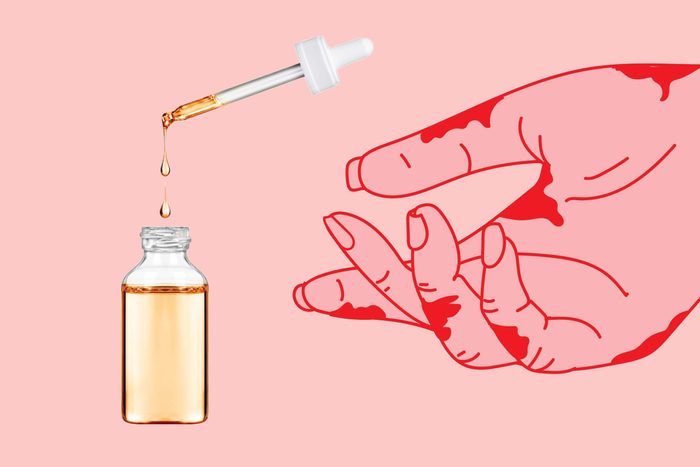
Tea tree oil uses: Relieve psoriasis
“Psoriasis is an inflammatory skin condition,” explains Dr. Shamban. She says that tea tree oil—and any oil in general—can help. However, tea tree oil works well as an anti-inflammatory, so you may want to make it your go-to choice. She says it works best if you add a couple of drops to a highly moisturizing oil like argan oil or olive oil. Doing so can provide relief and help improve skin. You may want to also consider the foods you eat; here are 7 foods that can make your psoriasis worse.
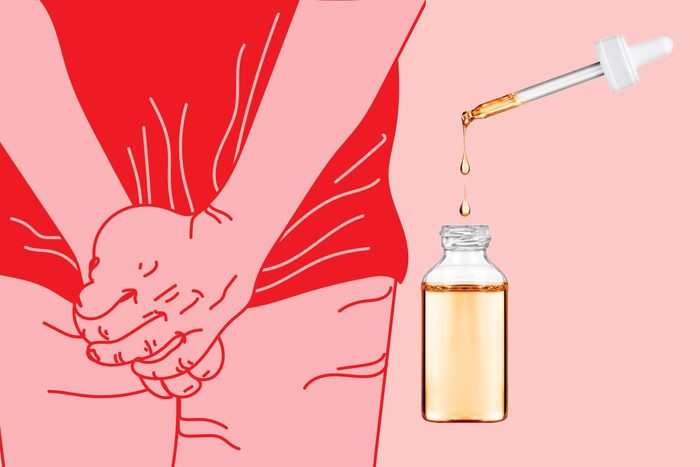
Tea tree oil uses: Treat yeast infections
Tea tree oil can help you manage a yeast infection; specifically, vaginal yeast infections. A 2015 study published in the journal Phytotherapy Research indicates that vaginal suppositories containing tea tree oil may contribute to beneficial vaginal microbiota.
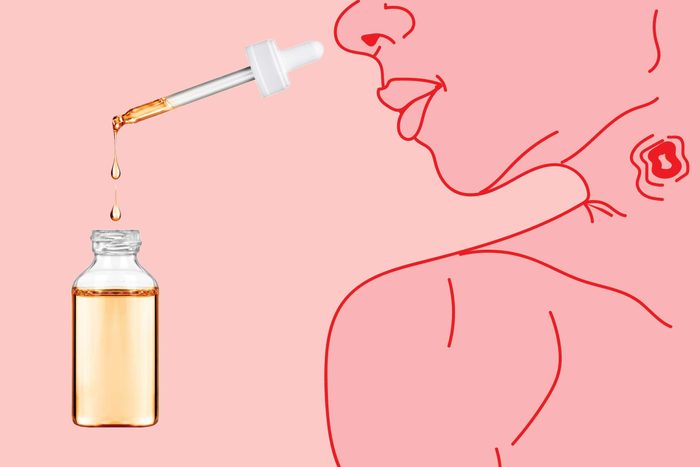
Tea tree oil uses: Zap boils
“Tea tree oil helps reduce inflammation and also reduces bacteria,” Dr. Shamban says, which is perfect for fighting boils. She explains that what’s nice in particular about this more natural remedy is that it helps treat the skin without a “scorched earth policy.” In other words, she says that tea tree oil can help fix the problem area without irritating or disrupting the healthy skin microbiome on the rest of your face. However, she says not to use pure tea tree oil only, as it may cause irritation. Just add a drop or two to a few drops of a carrier oil (such as rosehip oil) to the affected area. And since you’re working to get rid of that boil, don’t even think about getting in a hot tub as it can give you a staph infection; here are some reasons why hot tubs are actually pretty gross.